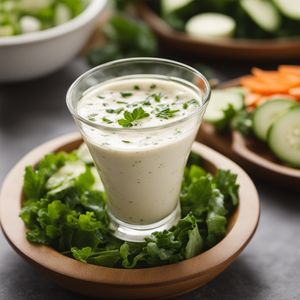
Dish
Italian Dressing
Italian dressing is made with a blend of oil, vinegar, herbs, and spices. The exact ingredients can vary depending on the recipe, but most Italian dressings include garlic, oregano, basil, and red pepper flakes. The dressing is typically mixed together in a jar or bottle and shaken well before serving. Italian dressing is a low-calorie and low-fat option for dressing salads and can be a healthy addition to any meal.
Origins and history
Italian dressing originated in the United States in the 1940s and was inspired by Italian cuisine. It quickly became a popular salad dressing and is now a staple in many households. The dressing is named after its Italian-inspired flavor profile.
Dietary considerations
Italian dressing is typically gluten-free and vegan, but it is important to check the ingredients to ensure that there are no hidden allergens. Some store-bought Italian dressings may contain added sugar or preservatives, so it is important to read the label before purchasing.
Variations
There are many variations of Italian dressing, including creamy Italian dressing, balsamic Italian dressing, and Greek Italian dressing. Some recipes may also include additional ingredients such as honey, mustard, or lemon juice.
Presentation and garnishing
Italian dressing can be presented in a jar or bottle and garnished with fresh herbs or a lemon wedge. It can also be drizzled over salads or used as a dipping sauce for vegetables.
Tips & Tricks
To make Italian dressing even healthier, try using a blend of olive oil and vinegar instead of store-bought dressing. You can also experiment with different herbs and spices to create your own unique flavor profile.
Side-dishes
Italian dressing pairs well with a variety of side dishes, including pasta salad, grilled vegetables, and breadsticks. It is also a great marinade for chicken or fish.
Drink pairings
Italian dressing pairs well with a variety of drinks, including white wine, beer, and lemonade.
Delicious Italian Dressing recipes
More dishes from this category... Browse all »

Blue Cheese Dressing
American cuisine

Fa'alifu
Samoan cuisine

Green Goddess Dressing
American cuisine

Louis Dressing
American cuisine

Ranch Dressing
American cuisine

Russian Dressing
American cuisine

Thousand Island Dressing
American cuisine

Wafu
Japanese cuisine
More cuisines from this region...

Chinese American cuisine
Savory, Bold, Comforting, Familiar

Filipino-American cuisine
Savory, Sour, Sweet, Umami, Spicy

Greek-American cuisine
Savory, Tangy, Salty, Sweet, Bitter

Mexican-American cuisine
Savory, Spicy, Tangy, Sweet, Umami

New American cuisine
Bold and complex flavors, Combination of elements (sweet, sour, salty, umami), Contrasting textures and temperatures

